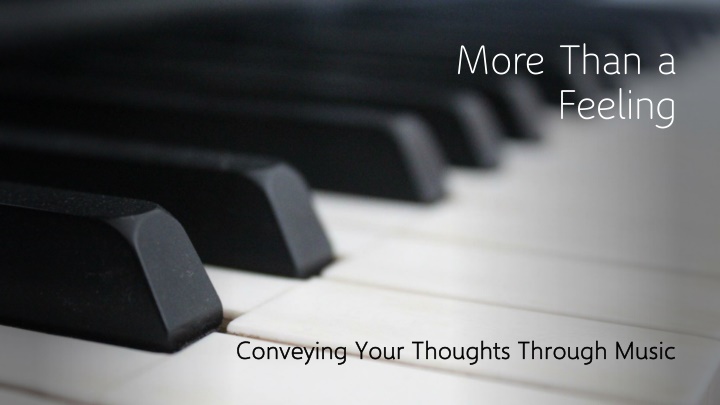
Expressive Composition Guide: Music, Emotions, Dynamics, Tempo, and More
Discover the art of composing music by conveying your thoughts and emotions through various elements like music, emotions, dynamics, tempo, and structure. Explore how to choose instruments, arrange events, and create engaging endings to captivate your audience. Learn valuable tips for practicing, rehearsing, and confidently delivering your performance.
Download Presentation

Please find below an Image/Link to download the presentation.
The content on the website is provided AS IS for your information and personal use only. It may not be sold, licensed, or shared on other websites without obtaining consent from the author. If you encounter any issues during the download, it is possible that the publisher has removed the file from their server.
You are allowed to download the files provided on this website for personal or commercial use, subject to the condition that they are used lawfully. All files are the property of their respective owners.
The content on the website is provided AS IS for your information and personal use only. It may not be sold, licensed, or shared on other websites without obtaining consent from the author.
E N D
Presentation Transcript
More Than a Feeling Conveying Your Thoughts Through Music Conveying Your Thoughts Through Music
Happy Happy Sad Sad Angry Angry Excited Excited Scared Scared Choose an Choose an Emotion Emotion
Soft )Piano) Meduim (Mezo-Forte) Strong (Forte) Choose a Choose a Dynamic Dynamic
Slow (Largo) Meduim (Andante) Fast (Allegro) Choose a Choose a Tempo Tempo
CHOOSE AN INSTRUMENT
Place the events of your composition (entrances and exits) in sequential order from beginning to end. Part A: Part A: Timeline Timeline
Echo: Whatever the caller does, everyone else copies. Fixed Response: No matter what the caller does, everyone else responds with a pre- written phrase. Part B: Part B: Call and Call and Response Response
A-B-A The initial statement returns in the end Examples in poetry Examples in expository writing Rondo Rondo Form Form
Write an ending that will leave your audience feeling Ending Ending feeling.
Have a clear plan Learn small parts first then put together Finish a run-through if you can, then go back and rework trouble spots Once is not enough. Play it as MANY TIMES AS POSSIBLE! Practice/Rehearse Practice/Rehearse
Be confident. Follow your plan Mistakes WILL happen (DON T STOP!) (DON T STOP!) Performance Performance
